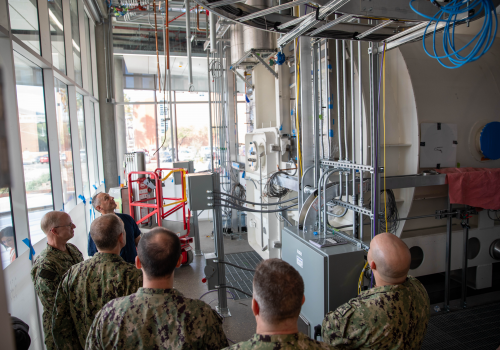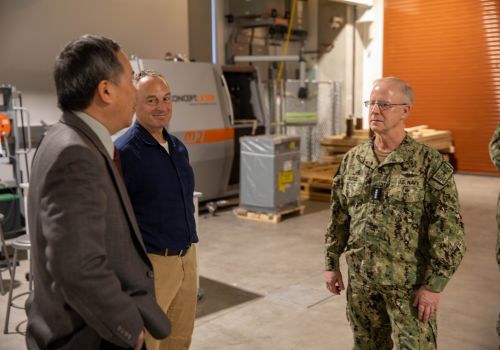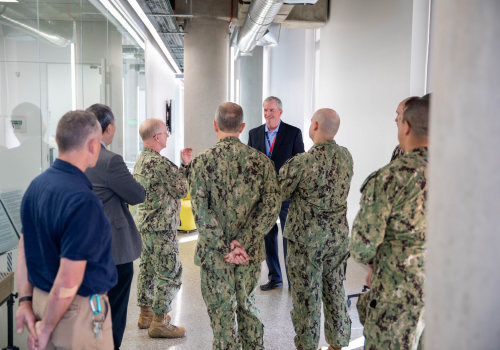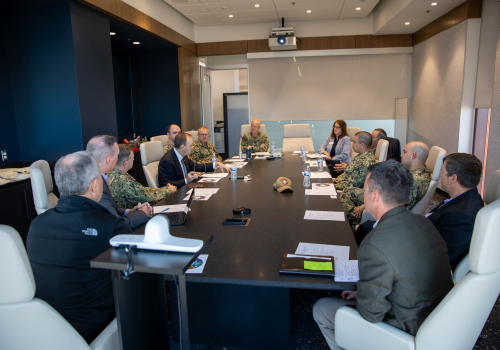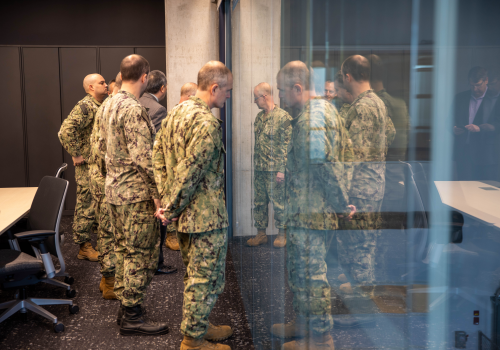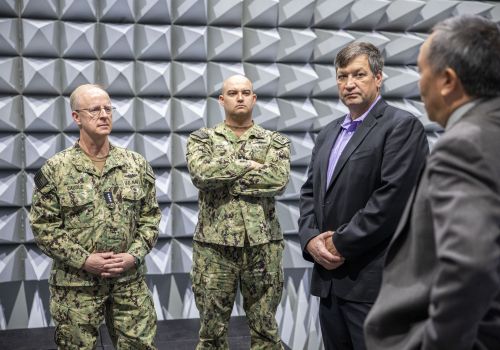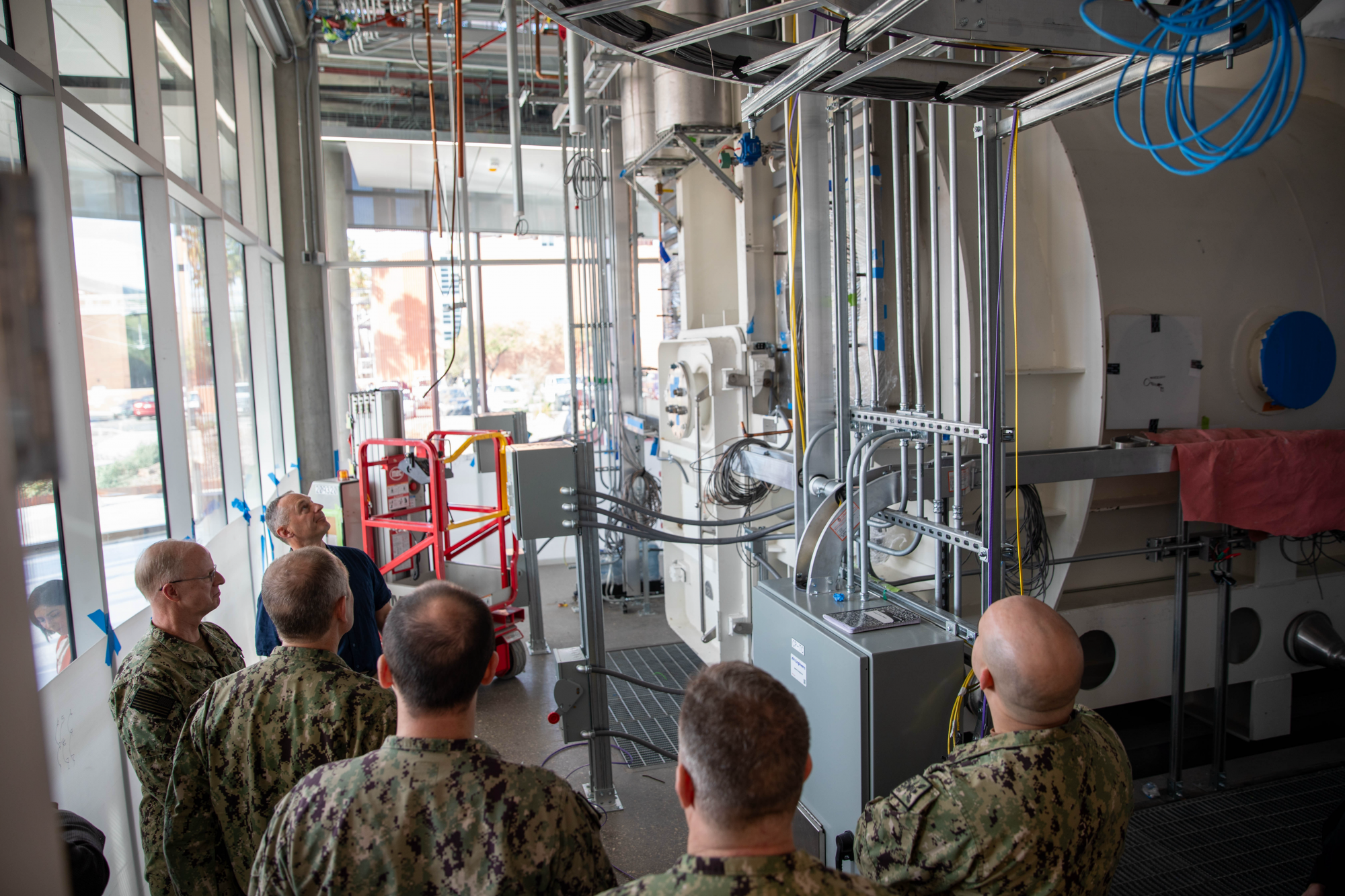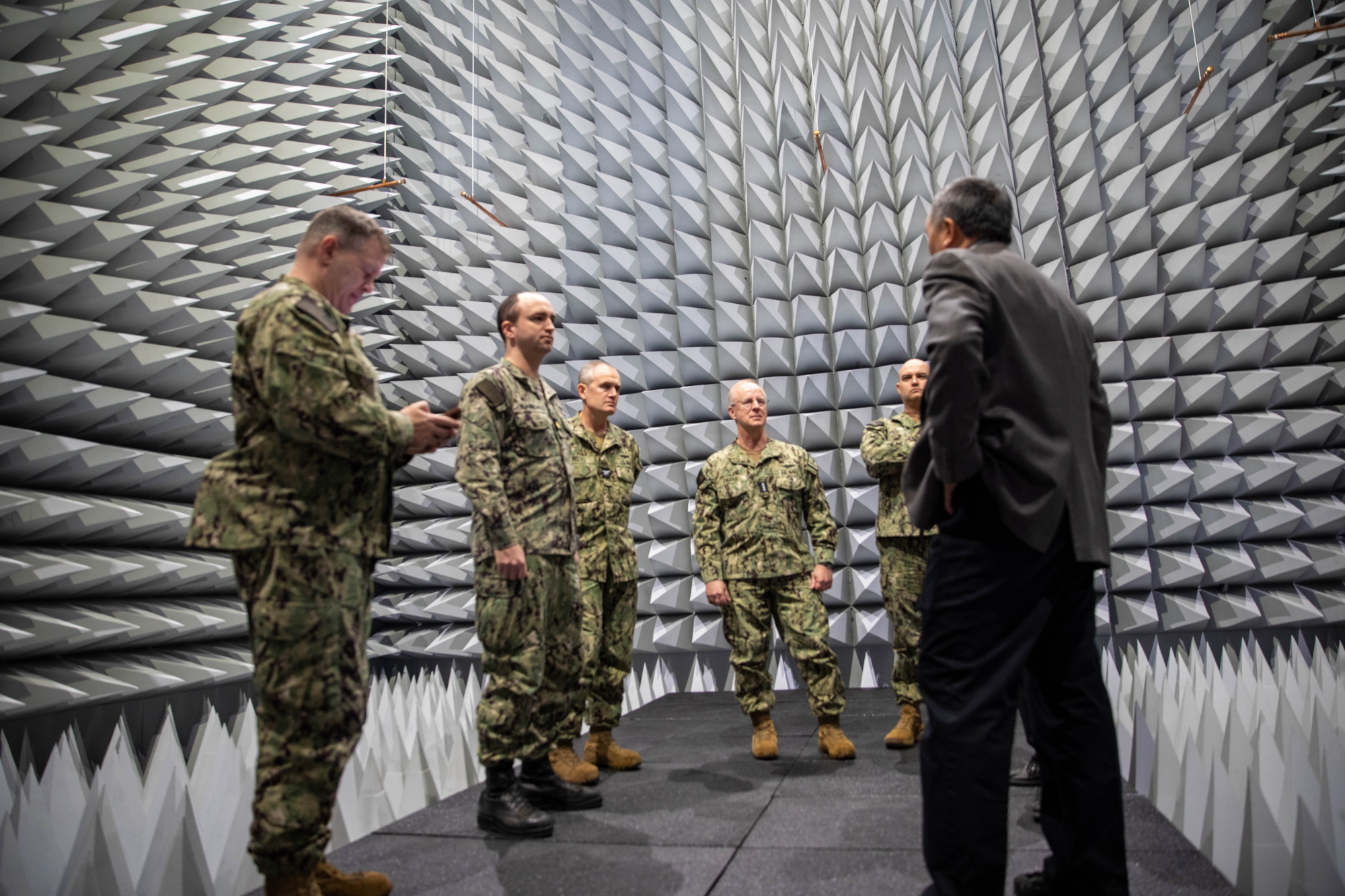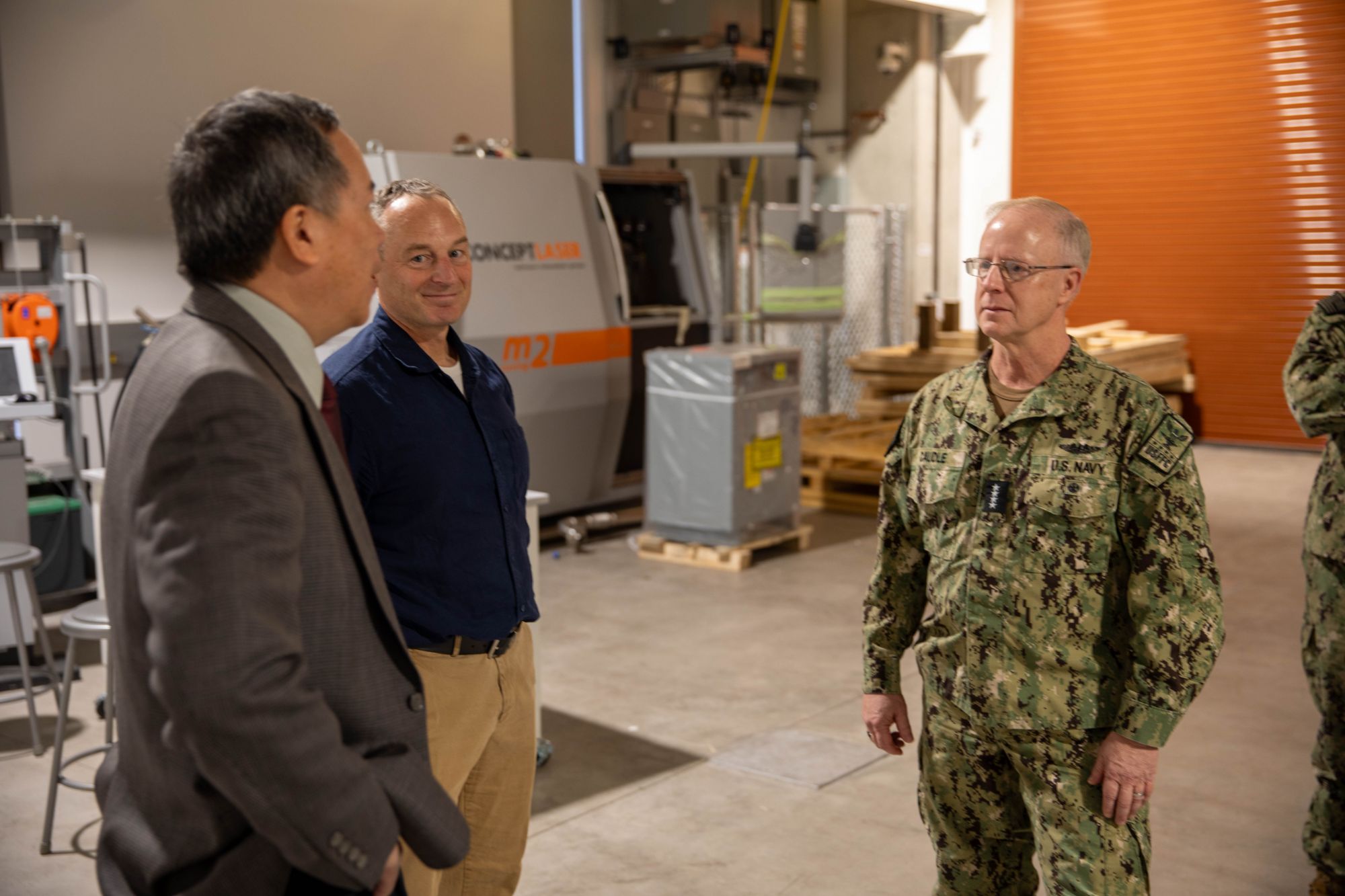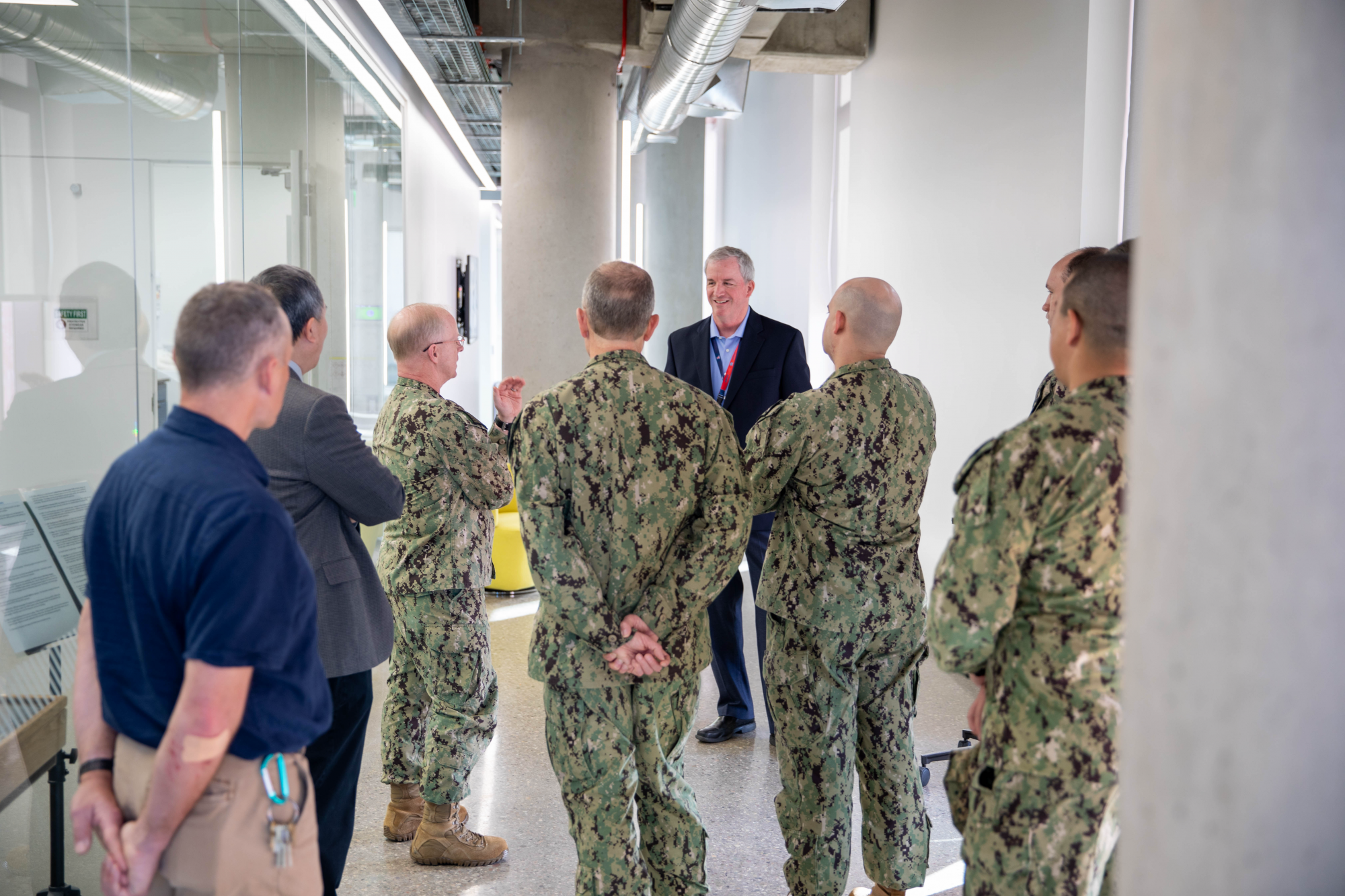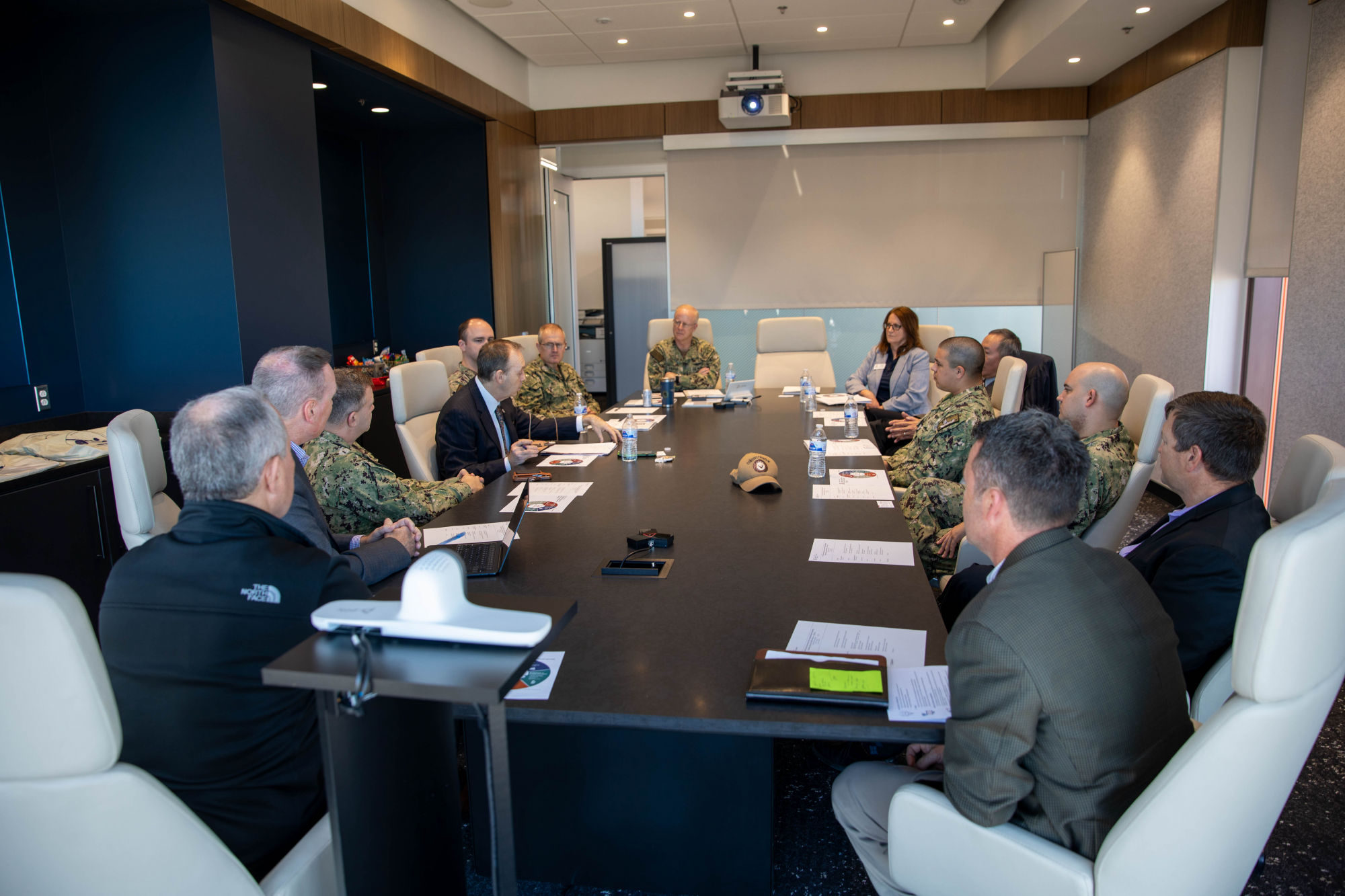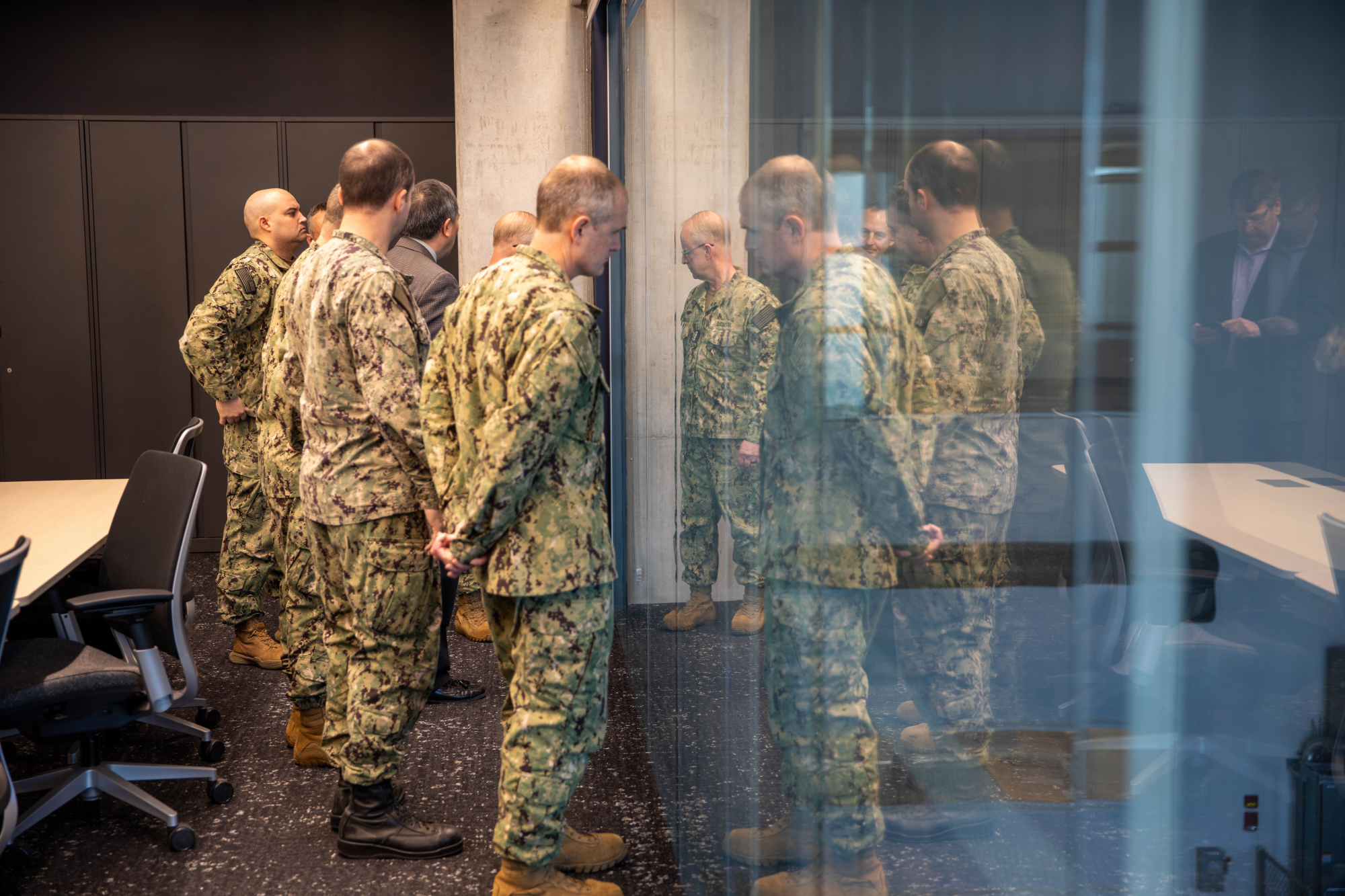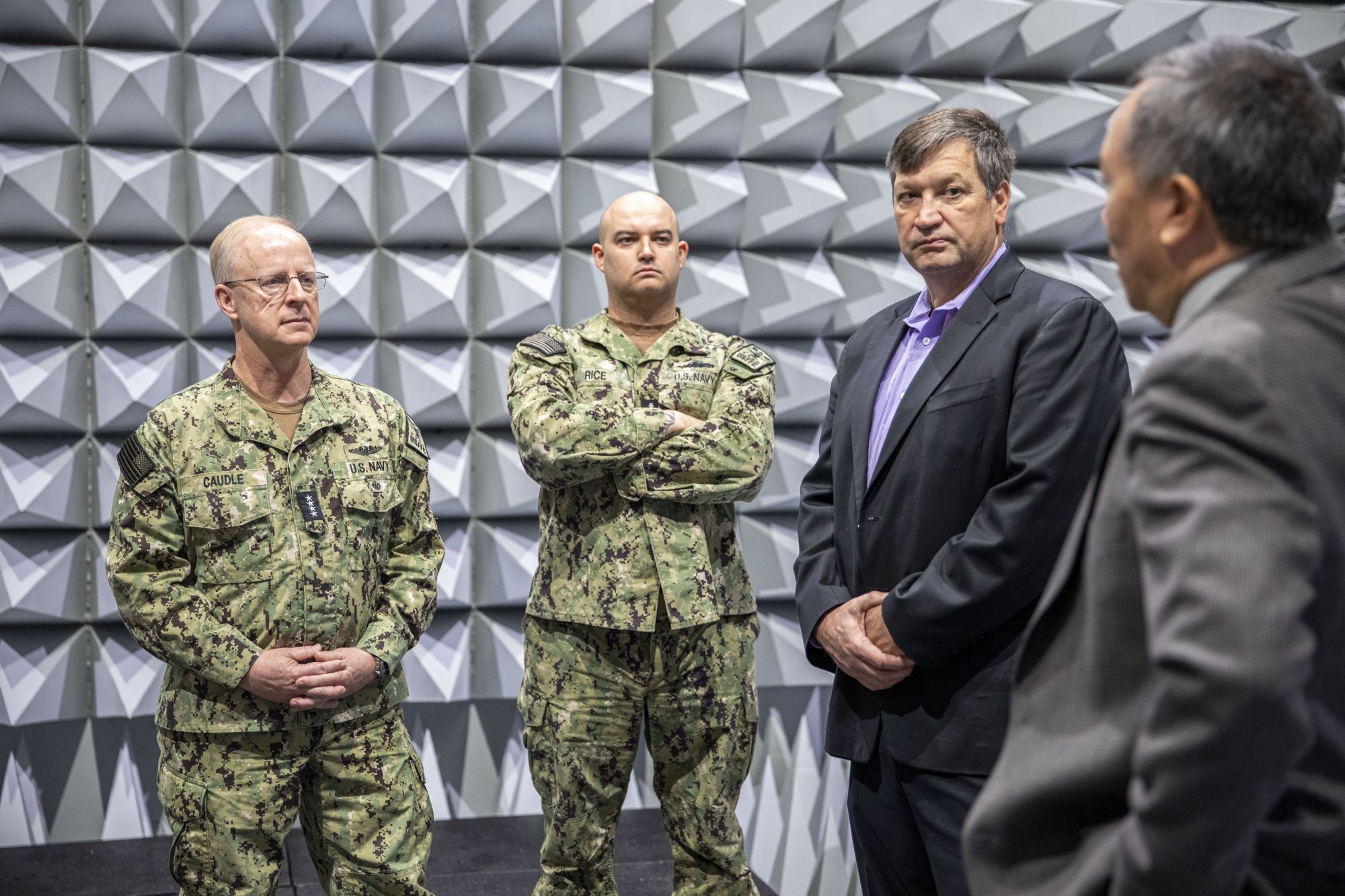Gallery: U.S. Fleet Forces Command Tours University of Arizona
Admiral Caudle and Elliott Cheu.JPG
Admiral Daryl Caudle, commander of U.S. Fleet Forces Command, led a delegation to the University of Arizona campus on Tuesday, Jan 30. Inside the new Applied Research Building, UArizona faculty and staff demonstrated the university’s innovative advancements in national security, hypersonics, semiconductors, data, space domain awareness and quantum.
ARB is a highly specialized, one-of-a-kind, 89,000-square-foot facility that pairs new applied research capabilities with state-of-the-art equipment and technology and brings together several interdisciplinary university programs under one roof.
Elliott Cheu, interim senior vice president of research and innovation, convened a conversation with representative university leaders to provide the delegation with an overview of research and workforce training highlights. Participants included:
- Shane C. Burgess, vice president for the Division of Agriculture, Life and Veterinary Sciences, and Cooperative Extension, and the Charles-Sander dean of the College of Agriculture, Life and Environmental Sciences at the University of Arizona
- Mark Van Dyke, associate dean of research in the College of Engineering and professor of biomedical engineering
- Austin Yamada, president and CEO of UArizona Applied Research Corporation
- Nate Gahr, senior director for national security programs in the Office of Research, Innovation and Impact
- Lisa Romero, associate vice president of communications in the Office of Research, Innovation and Impact
Prior to the discussion, the delegation toured the ARB, which serves as a world-class test and integration center for satellites, spacecraft and other scientific equipment, including a 40-ton thermal vacuum chamber that can replicate conditions in outer space. The chamber is the largest of its kind at any university in the world.
Mark Matsuko, director of operations and facilities for the ARB, led the tour through key features such as: a 40-foot-tall, high-bay payload assembly area for constructing high-altitude stratospheric balloons and nanosatellites known as CubeSats; a non-reflective, echo-free room called an anechoic chamber to test antennae for command, control and data relay purposes; and a large lab for testing the performance of a wide range of objects, from airplane wings to sensors.
Michael Lesser, director of the University of Arizona Imaging Technology Laboratory, opened his lab in the ARB to the delegation and answered questions. Lesser, who earned his Ph.D. from the university, also serves as a senior research scientist at Steward Observatory.
ARB contains a Missions Operations Center, which allows scientists and engineers to carefully monitor and command spacecraft and balloons after launch. Equipped with all the necessary capabilities to manage a mission from the ground, the center can conduct mission operations for certain NASA missions.
“The research and education happening throughout this building will provide unique capabilities for the university and allow for expansion of industry and advanced manufacturing partnerships. This will increase our ability to turn discoveries into real-world solutions and train future leaders so they are well-prepared to enter an increasingly competitive workforce,” said Cheu. “We are grateful to Admiral Caudle and his team for their interest in learning more about the innovative work happening at the University of Arizona.”
Tags
Subscribe to the UArizona Impact in Action newsletter to receive featured stories and event info to connect you with UArizona's research, innovation, entrepreneurial ventures, and societal impacts.


